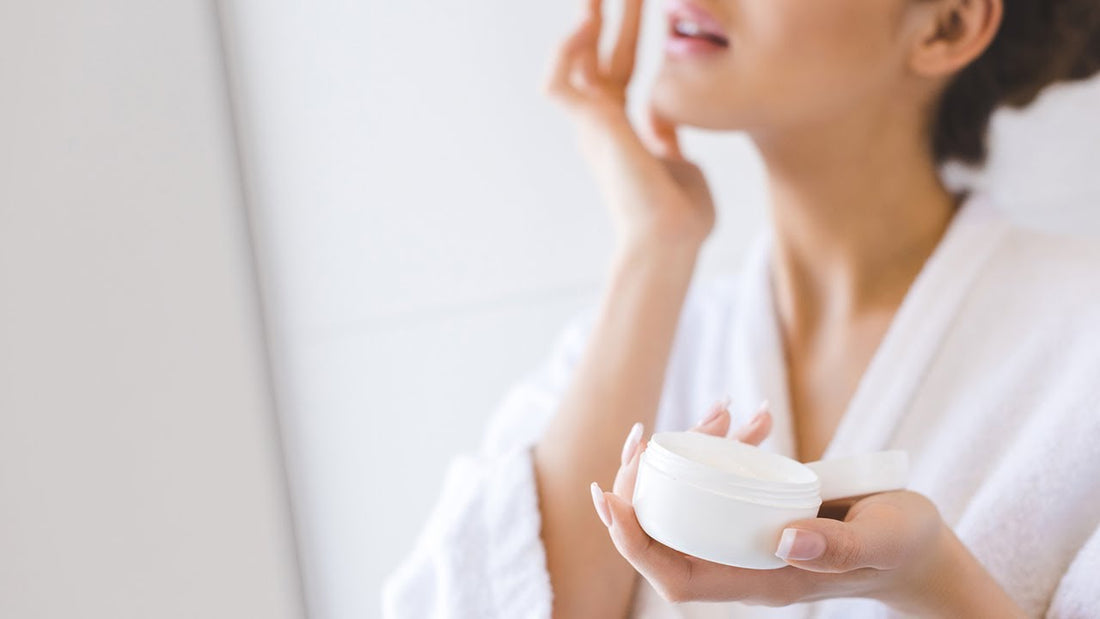Read Time: 5 min | Categories: Skincare | Body Health
5 Natural Tips to Soothe Dry Skin
Leigh Matthews, BA Hons, H.Dip. NT
Share this article
Chapped skin is a common occurrence in fall and winter, as cold winds, indoor heating, and wet weather conspire to cause skin irritation. Sudden changes in temperature can confuse the skin, and the skin itself produces different levels of protective lipids, called ceramides, depending on the season.
Dry indoor air can also contribute to dehydration and we also tend to drink less water in winter, causing dry skin that is more prone to irritation. While you might not worry too much about the appearance of your skin, it’s important to note that chapped skin is not just a cosmetic concern.
Dry, cracked skin is a sign that the skin’s barrier function is compromised. This leaves you vulnerable to infection with bacteria and other microorganisms like Staphylococcus aureus.
So, how can you prevent and soothe chapped skin naturally? Let’s take a look at five natural tips for winter skin care.
1. Drink Plenty of Water
Staying hydrated can be difficult in winter for many reasons. Indoor heating can quickly dry out your skin, and cooler temperatures tend to leave you feeling less thirsty. To stay hydrated, sip warm herbal tea, plain or infused water, or low-sodium soups.
And, if the air in your office or home is dry, place a bowl of water near a heating source to humidify the air.
2. Vitamins, Minerals, and Phytonutrients
Local fresh fruits and vegetables can be harder to come by in late fall and winter, but it’s still essential to eat a balanced, healthy diet. Pickles, preserves, and seasonal produce like squash and brassicas (broccoli, cauliflower, cabbage, etc.) can provide plenty of vitamins, minerals, and phytonutrients to help keep your skin healthy.
Antioxidants help protect cell membranes, and healthy skin cell membranes are better able to control moisture levels, keeping your skin from drying out and cracking.[1] Vitamins C and E are especially beneficial in this regard as these two nutrients can refresh each other and guard against free radical damage to the water and lipid components of cells.[2]
Astaxanthin is another beneficial nutrient that can help support skin health all year round. This xanthophyll carotenoid is produced by bacteria, microalgae, and yeasts and is well known for its protective effects as an antioxidant in the eye.
More recently, research has noted various potential skin benefits for astaxanthin, including “photoprotective, antioxidant, and anti-inflammatory effects.”[3]
3. Moisturize – Inside and Out!

Many skin lotions and creams that work well for youthful skin in the summer can have undesirable effects on older skin and dry skin in the winter. Watch out for products that contain a high level of essential oils as these can have a drying effect on the skin. Toners, lotions, and potions that contain alcohol can also dry out the skin, as can hand sanitizer.
In contrast, natural topical moisturizers such as coconut oil, jojoba oil, and even olive oil mixed with vitamin E oil are good for chapped skin. These oils help lock in moisture, especially if used right after showering or bathing when the skin’s pores are open and likely to lose moisture faster.
You can also nourish beauty from within! A diet rich in essential fatty acids from nuts, seeds, and olive oil can help the body manage skin moisture levels. Essential fatty acids such as omega-3 found in flaxseed, algal oil, fish, and fortified products protect cell membranes and support a healthy inflammatory response, making them helpful for chapped skin.[4]
Research shows that important skin lipids called ceramides play a key role in maintaining skin hydration. Ceramides make up about half of all the lipids between skin cells, but levels of ceramides decline with age and decrease by around half in fall and winter compared to spring and summer. This may be a key contributor to dry, chapped skin in cooler months.[5]
Studies suggest that supplemental ceramides in the form of plant-derived phytoceramides can help improve skin hydration and reduce wrinkles after only 15 days.[6]
In one randomized, double-blind, placebo-controlled trial, a supplement containing ceramides was associated with significant improvements in skin hydration and decreased signs and symptoms of dry skin, including reduced itching, squamae, roughness, and redness, compared to placebo.[7]
4. Glove Up
If your workplace requires frequent hand washing or the use of hand sanitizer (such as in a hospital or daycare), you’re more likely to develop chapped skin on your hands. Keeping handwashing to the minimum required for good hygiene can help. As well, try using a rich moisturizer on your hands and wearing cotton gloves to bed, especially for chapped skin.
Health care workers may want to look into using specially formulated gloves that contain aloe vera or other moisturizing substances. A pilot study found that medical examination gloves that gradually deliver aloe vera to the skin led to noticeable improvement in fine wrinkling and erythema in some people using the gloves for just 3.5 days.[8]
While further studies are yet to be carried out, the gloves are becoming increasingly common in health care settings.
5. Protect Your Skin
If you live in a windy city or do a lot of cycling or hiking, consider wearing wrap-around cycling glasses. This can help prevent your eyes from watering and chapped skin developing at the corners of your eyes due to automatically wiping away those tears and irritating the thin skin.
You can also help protect your skin against harsh winds and reduce your risk of chapped skin by wearing a fetching balaclava, or simply a hat, scarf, and gloves.
